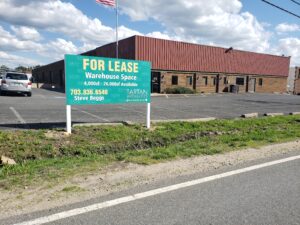 About Tartan
About Tartan
How long has Tartan Properties been in business?
Since 1973, and we are very proud that we still represent two of our original clients.
Does Tartan Properties only service Alexandria, Virginia?
While Tartan has expertise in the Alexandria market, we provide commercial real estate brokerage and advisory services throughout Northern Virginia.
What services do you provide?
Tartan Properties provides both tenant/ buyer representation and landlord/seller representation. We represent clients on both sides of lease and sales transactions—just not at the same time. We also provide an array of commercial real estate market consulting services.
Does Tartan Properties charge for tenant representation or buyer advisory services?
The market practice is for the property owner to pay the tenant or buyer’s broker fee in leasing and sales transactions at the time of closing. If you are a tenant looking for office space, or an investor looking to purchase, our expertise is available to you with no out-of-pocket costs.
Does Tartan Properties also provide residential real estate services?
No, it does not. Tartan Properties Commercial is very focused on providing best-in-class brokerage services for owners and users of office, industrial, and retail properties. Besides, as much as we like to work, we have things to do on the weekend other than talk about the colors of curtains and granite counter tops. If you need a referral for a qualified residential agent in your market, we would be happy to make a recommendation for you. We know many residential experts that would love to talk with you about these things.
Why should I work with Tartan Properties to find a space?
Let’s make this simple: would you operate on yourself or represent yourself in a complicated court trial? Of course you wouldn’t–-not unless you were crazy. So why would you undertake a costly investment and complex process without all the requisite skills to be successful? Landlords and tenants who represent themselves only have data points on the one or two deals they are involved in. Tartan Properties is involved in multiple transactions at any given time and has access to data on all current and historical deals in our area. Put the experience of a TARTAN in your corner.
 Is Tartan Properties hiring?
Is Tartan Properties hiring?
Tartan Properties is always looking to connect with motivated and talented professionals. If you are an avid coffee drinker, like to exercise, and have experience in real estate or a similarly competitive field, please submit your resume.
FAQ’s about Commercial Real Estate
The commercial real estate industry is filled with murky lingo and broker jargon that can be confusing at the best of times, and intimidating at the worst. Use these FAQ’s to decode the language of brokers, landlords and other insiders. Or just ask us to clarify.
What is a triple net or NNN lease?
NNN is a type of lease that requires the tenant to pay—in addition to the base rent—all costs associated with operating the space (cleaning, utilities, etc.), real estate taxes, and insurance.
What is a full service lease?
A full service (FS) lease includes all the costs associated with your tenancy: utilities, cleaning, real estate taxes, and management fees. If the landlord is advertising a full service rental rate then you will have no other monthly charges. However, in many cases the tenant will be responsible for a prorated share of any increases after the first year of tenancy.
 Why does the tenant pay the first month’s rent and security deposit when signing the lease?
Why does the tenant pay the first month’s rent and security deposit when signing the lease?
Landlords need some financial assurance that the tenant will hold up their end of the deal by opening for business and then paying the rent.
What is an LOI or letter of intent?
A letter of intent is a document in which two parties can negotiate the basic terms of a real estate transaction, be it a sale or a lease. Once both parties reach an agreement on terms, the document can be executed by both parties. An LOI is non-binding and is usually the first step before signing a lease agreement.
Explain rentable square feet vs. useable square footage.
The “rentable” number is the total square feet used to calculate the rental rate and may include the tenant’s proportionate share of the lobby, hallways, and other common areas in the building available to and used by all the building’s tenants. The “useable” number is the actual amount of square feet within the walls of the space being leased—in other words, the space available for the tenant’s exclusive use.
What is an escalation clause?
Escalation is a clause in a lease that provides for an increase in the rental rate at a future time, usually on an annual basis. This increase can be a variable amount (tied to a government cost-of-living index, for example) or a fixed percentage agreed to with the landlord in the lease agreement.
What is the lease commencement date?
Lease commencement is generally the date when the lease has been fully executed and goes into effect. The tenant may take possession of the building or space at that time, but not always. On occasion, the owner may continue to have possession, for example, if they wish to make landlord improvements.
So what is the rent commencement date then?
Rent commencement is the date that the tenant is scheduled to begin paying rent. This can be several months after lease commencement. Why? Many deals include a rent abatement period—essentially rent-free time in the space—for the tenant to complete a build-out before actually moving in or opening their business.
Am I legally committed when I sign a letter of intent (LOI) or proposal?
No, proposals and LOI’s are not binding by design. The LOI’s purpose is to spell out the main points of a deal before moving on to a formal contract. We compare the negotiation of the LOI to the early stage of dating: you are just trying to sort out if the relationship has any long-term potential!
What is a TI allowance?
A TI or tenant improvement allowance is an agreed-upon budget provided by the landlord for the tenant to make improvements to the leased space. Any costs for the improvements that exceed the allowance are the responsibility of the tenant to pay.
What is a turnkey build-out?
Turnkey tenant improvements are provided at the landlord’s expense according to the plan previously agreed upon by both parties. In a turnkey situation, the landlord bears all the financial risk of construction.
How do you calculate cost per square foot to get a monthly rent figure?
Rental Rate x Square Footage = Annual Rent Annual Rent ÷ 12 = Monthly Rent Payment. (Here’s an example: $35/sf x 5,000sf = $ 175,000/year annual rent. That annual rent ÷ 12 months = $14,583/month rent payment.)
What is a typical lease length?
The standard lease length is three to five years. Typically, a landlord’s deal costs are between one and two years’ worth of rent payments. Therefore, the landlord needs a longer term to gain a sufficient return on their investment.
What is common area?
Common area is the area used in common by the tenants of an office building. Common area includes building and elevator lobbies, restrooms, stairwells and hallways.
What is occupancy cost and what does it include?
A tenant’s occupancy cost is the total cost incurred pursuant to a lease. This includes such items as rent, operating expense increases, utilities, parking charges, remodeling costs, etc.
What is a tenant representative?
A tenant representative is a broker or agent who helps the tenant find space and negotiate leases. The represntative advocates for their client int he negotiation process. The relationship is required by law to be memorialized in a signed representation agreement.




